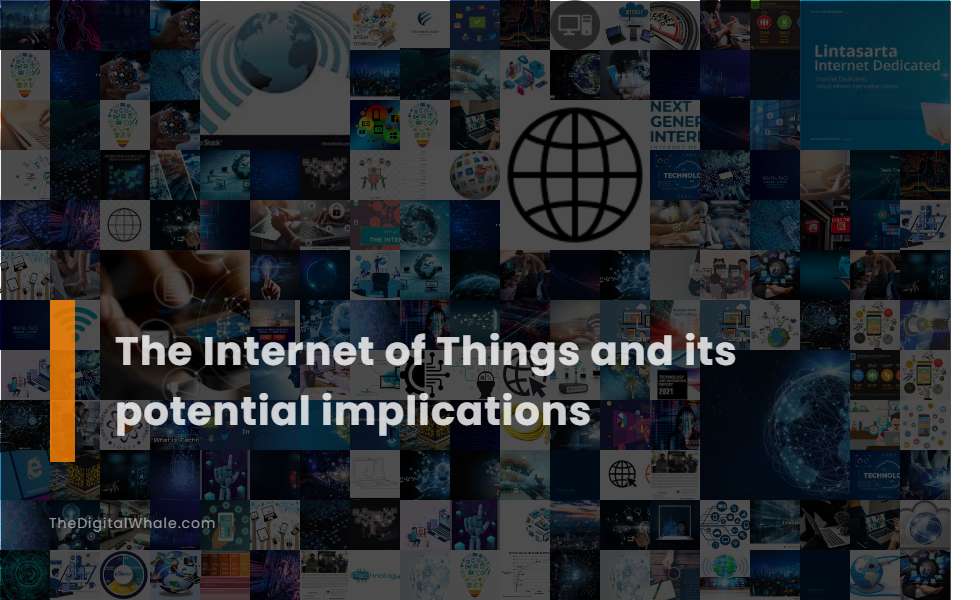The Internet of Things and Its Potential Implications
What are some potential applications of IoT in the government service industry? What are the management implications of the Internet of Things? Let's find out more about The Internet of Things and Its Potential Implications.

Data-Driven: Collects and analyzes vast amounts of data from sensors and other sources.
The Internet of Things (IoT) collects and analyzes vast amounts of data from sensors and other devices, enabling real-time monitoring, predictive maintenance, and optimization of processes by transmitting data to central systems for analysis and extracting actionable insights. This data collection process involves various methods, including telemetry, sensor data collection, and the integration of Machine Learning and AI to enhance data analysis and automation.
Intelligence and Identity: Extracts knowledge from generated data and each device has a unique identity.
In the context of the Internet of Things (IoT), Intelligence and Identity involve assigning unique identifiers (UIDs) with associated metadata to devices, enabling them to connect and communicate effectively. This unique identity helps in tracking, querying the status of devices, and extracting knowledge from the generated data, which is crucial for managing and securing IoT devices. For a more detailed explanation of these concepts, you can visit the detailed discussion on Identity of Things at DataTechVibe.
Scalability: Capable of handling massive expansion and enormous data generation.
Scalability in IoT is crucial as it involves handling massive expansion and enormous data generation from a growing number of devices, requiring databases like TiDB that offer horizontal scalability, high availability, and efficient real-time data processing to manage the continuous influx of data. IoT scalability necessitates a robust and scalable network infrastructure to transmit and process vast amounts of data in real time. Solutions such as smart firmware and over-the-air updates optimize data amounts and efficiently manage devices. For more insights into mastering IoT data, consider exploring the benefits of a Scalable Real-Time Database which can be instrumental in sustaining these expansive networks.
Dynamic and Self-Adapting: Adapts to changing contexts and scenarios.
IoT devices and systems are dynamic and self-adapting, meaning they can respond to changing contexts and environments. For example, a surveillance system can adjust its camera settings based on whether it is day or night and adjust picture clarity according to environmental conditions, demonstrating their ability to adapt dynamically. For more detailed insights and examples, you can explore the characteristics of IoT on Starter Tutorials to understand how these devices revolutionize technology with their adaptable nature.
Interoperability: Ensures seamless communication and data exchange across different systems.
Interoperability in the Internet of Things (IoT) ensures seamless communication and data exchange between different devices, services, and systems, enabling a unified user experience and efficient integration through standards like the Matter Standard, which facilitates secure and cross-vendor compatibility.
Related:
What are the ethical implications of emergent tech? What are some ethical issues to consider when implementing ethical technology into a business? Let's find out more about The Ethical Considerations of New Technologies.
Embedded Sensors and Actuators: Interacts with the environment and collects/transmits data.
In the Internet of Things (IoT), embedded sensors detect and measure physical phenomena such as temperature, pressure, and motion, while actuators convert electrical signals into physical actions. This technology enables IoT devices to interact dynamically with their environment and perform tasks like engine monitoring, robotic control, and home automation. For more details on how sensors and actuators play a crucial role in enhancing interactions with the physical world, visit Cranes Varsity. These innovations continue to shape the landscape of smart technology and its applications.
Autonomous Operation: Operates without direct human intervention using AI, machine learning, and cloud computing.
The Internet of Autonomous Things (IoAT) enables devices to operate autonomously without human intervention, utilizing modern communication methods such as Bluetooth, GPS, and radar-sensing systems. By leveraging AI and machine learning, these devices can make decisions and adjust their functioning locally. This approach significantly reduces dependency on cloud servers, thus enhancing both efficiency and adaptability. For more in-depth details, you can visit the Internet of Autonomous Things blog.
Real-Time Access to Information: Provides uninterrupted flow of information and real-time monitoring.
The Internet of Things (IoT) enables real-time data streaming, providing an uninterrupted flow of information from connected devices. This real-time capability is crucial for immediate decision-making, enhanced user experiences, improved efficiency, and predictive maintenance across various industries, including industrial automation, healthcare, and smart homes.
Improved Efficiency: Enhances efficiency by automating tasks and reducing manual data collection.
The Internet of Things (IoT) enhances efficiency in various sectors by automating tasks, reducing manual data collection, and enabling real-time monitoring. This innovative approach includes predictive maintenance to minimize equipment breakdowns and optimizes energy consumption while significantly improving supply chain management through GPS-integrated IoT devices and wireless sensors. By providing real-time data and insights, IoT reduces the need for human intervention and streamlines processes such as inventory management, asset maintenance, and field service. For more insights on how IoT is transforming industries, visit IoT For All to explore its impact on various sectors. Ultimately, these advancements lead to increased productivity and reduced downtime, highlighting IoT's crucial role in modern operations.
Economic Impact: Potential to add significant value to the global economy, estimated at $3.9 trillion to $11.1 trillion per year by 2025.
The Internet of Things (IoT) is estimated to have a potential economic impact of $3.9 trillion to $11.1 trillion per year by 2025, significantly contributing to the global economy through increased efficiency, new business models, and improved productivity across various industries such as healthcare, manufacturing, and retail. To explore the profound implications of IoT on businesses and the economy, visit the comprehensive insights on the SumatoSoft Blog, where emerging trends and transformative impacts are analyzed in detail.
Related:
What are the harmful effects of technology addiction? What are some effects of technology on mental health? Let's find out more about Technology Addiction and Its Effect On Mental Health.
